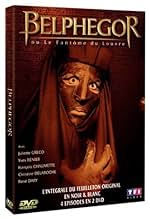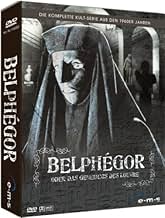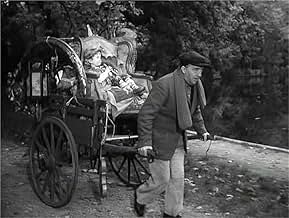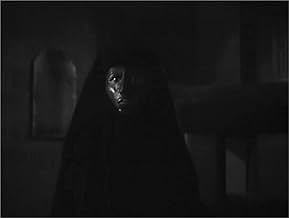"Belphégor" starts with an old man, who in over 30 years collected newspaper clippings about extraordinary phenomena. To protect them from the fallout of a possible war, he somehow managed to enclose them in tin cans. Is this scene necessairy? No. Is it memorable? Yes. This is how this miniseries works, it doesn't use the highway, it takes a scenic route.
Case in point: Belphégor. He isn't doing much. He is supposed to find some alchemical secret in the Louvre. There are some supernatural things happening, showing that he is a necessity for this task, but most of it remains a mystery. That's probably for the best, because dragged into the light these things tend to look rather stupid. In the end, the details don't matter. We've got the iconic outfit, the iconic mask, the inscrutable behavior. He is a phantom, other-worldly, he is the reason why people still remember this show. He is the main attraction, but he is far from being the only one.
Unlike too many TV movies from the 60s, "Belphégor" is never tediously slow or boring. Unexpected twists always keep the viewers interested and wondering. There are quite a few strange, remarkable scenes and there are some great actors, like René Dary, whose inspector Ménardie is very reminiscent of Jean Gabin's jovial and likable characters. The last name-less Sylvie, whose first screen role was in 1912, as the unfathomable, quirky Lady Hodwin. François Chaumette as the insidious millionaire Boris Williams. The museum watchman Gautrais (Paul Crauchet), called glug-glug by his colleagues. The leading actor Yves Rénier is very convincing as the pretty boy Bellegarde. And the legendary Juliette Gréco plays her role really well, too.
The silent version from 1927 - also with a runtime of more than 4 hours - is completely different. There is nothing supernatural, no good reason for the use of Belphégor at all. Why turning something that should have and could have been done without attracting any attention into a media sensation? It is close to the novel by Arthur Bernède, a rather trivial crime story that absolutely needed a spectacular gimmick to attract any attention. Belphégor 1965 wins triumphantly.
Belphégor 2001 is just another version of "The Mummy". The way the third variant of the Belphégor outfit is introduced, doesn't make sense at all, but without it there wouldn't have been any connection to the previous two "Belphégors". At least, for the first time the Louvre is real, and there is a real (CGI-) phantom. And for a few seconds there is a cameo by Juliette Gréco, la jolie môme.
Belphégor 1965 is an original piece of art. There will never be a better version and there is no need for one.






























